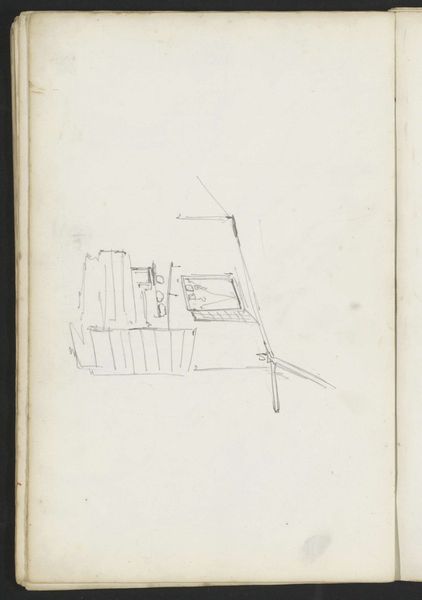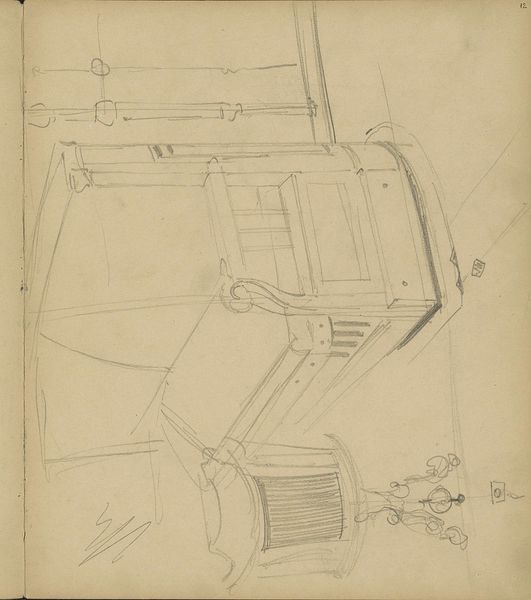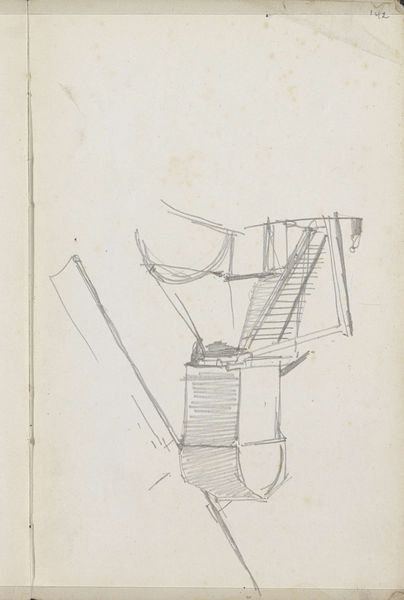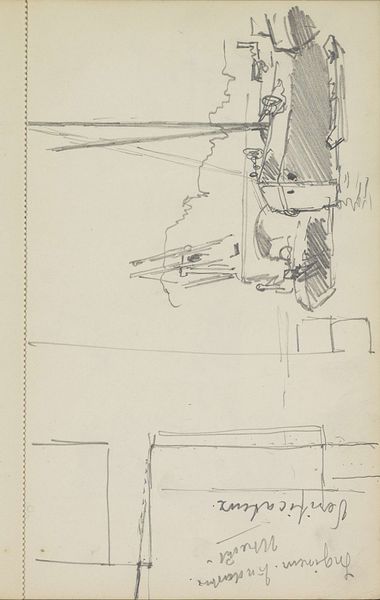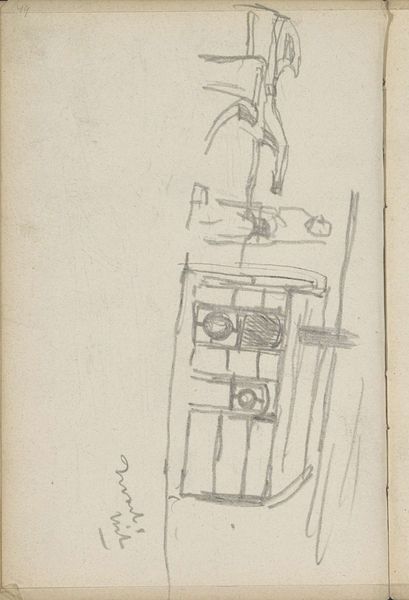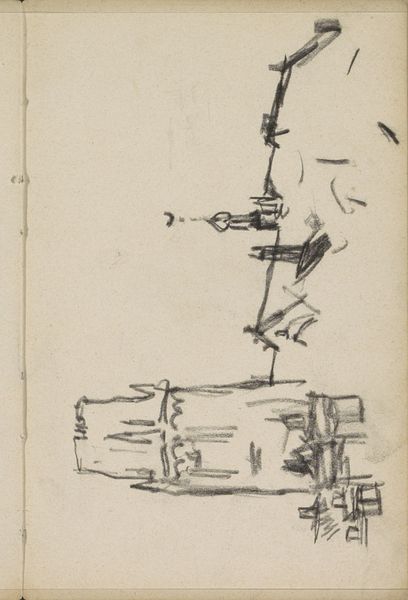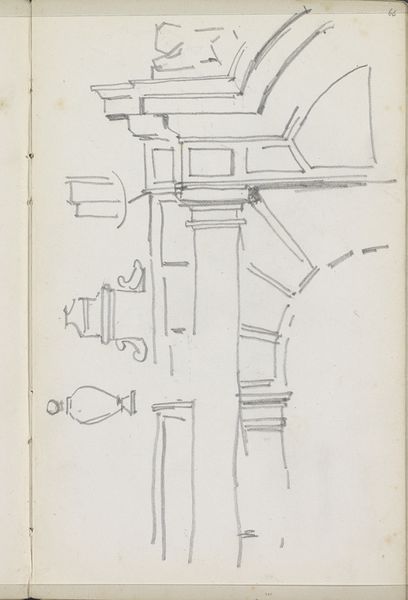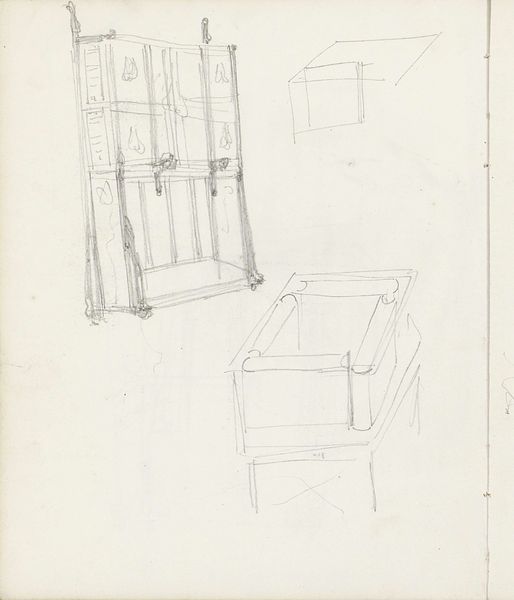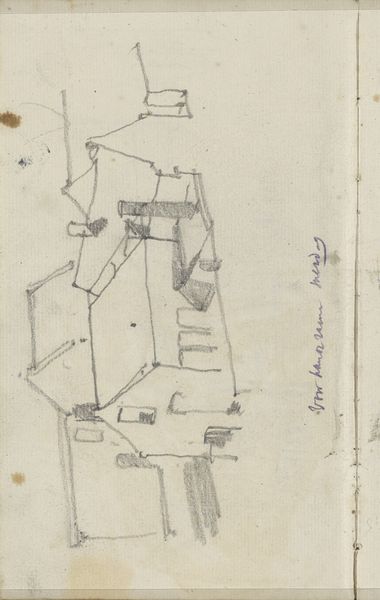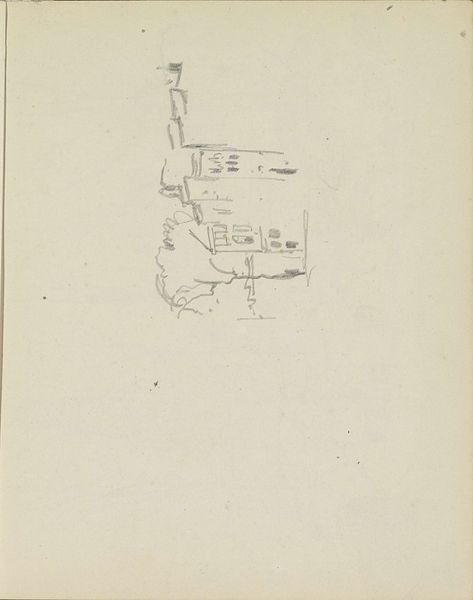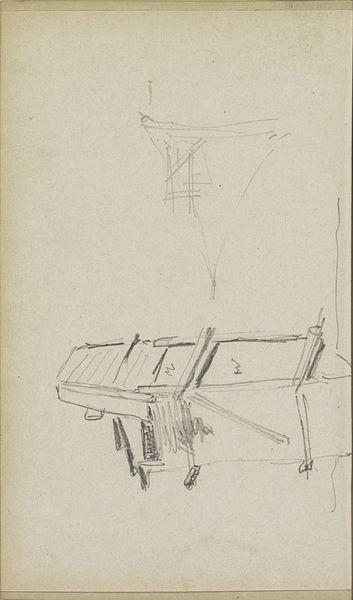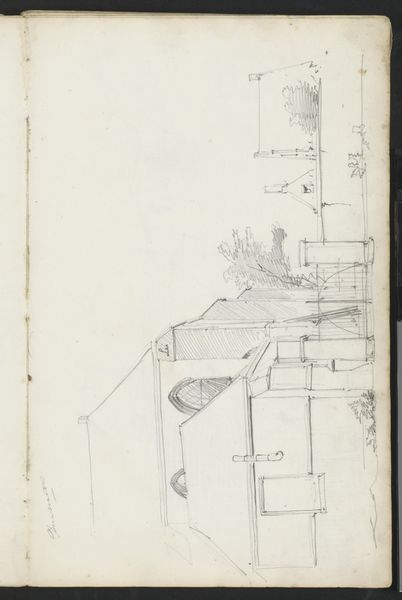
Figuur bij een wagen, mogelijk een badman bij een badkoets c. 1880 - 1906
0:00
0:00
Copyright: Rijks Museum: Open Domain
Editor: This is George Hendrik Breitner's "Figuur bij een wagen, mogelijk een badman bij een badkoets", dating from around 1880 to 1906. It's a drawing, mostly in pencil, and looks like a very quick sketch. It seems like a scene observed in passing. What do you see in this piece? Curator: I see more than just a quick sketch. Consider Breitner's commitment to portraying modern urban life and the working class. This "badman," or bathing attendant, and his "badkoets," or bathing cart, hint at the commodification of leisure and the social stratification inherent in access to even simple pleasures like sea bathing. Editor: So, you're saying this isn't just a random drawing, but a commentary? Curator: Exactly. Breitner wasn’t just documenting; he was implicitly critiquing. How might the availability of such services shape our understanding of labor and leisure during this period? Think about who could afford such services, and who was providing them. The sketch, while simple, opens a window into the power dynamics of the time. Editor: It’s amazing how a seemingly casual sketch can reveal so much about social inequalities. I had not considered how these themes of work and leisure are intertwined in the work. Curator: Yes, and the 'unfinished' nature of the sketch even speaks to the fleeting nature of observation in a rapidly changing urban environment. Breitner captures not just the scene, but the very experience of modernity. Editor: This has definitely made me rethink how I look at seemingly simple sketches. There's so much more to consider beyond just the surface image. Curator: Precisely. Art invites us to question, to dig deeper, and to consider the power structures that shape our world.
Comments
No comments
Be the first to comment and join the conversation on the ultimate creative platform.
